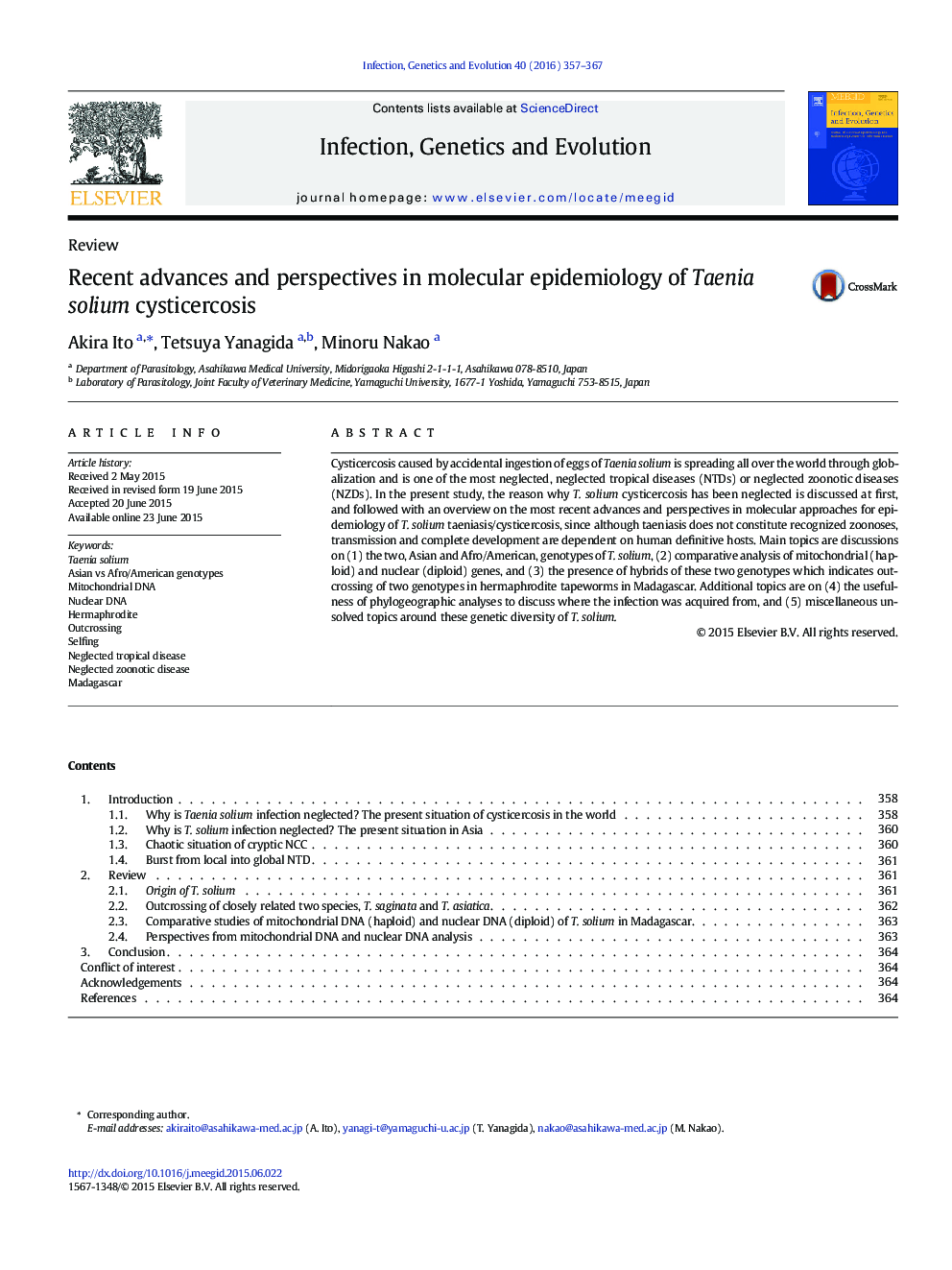| Article ID | Journal | Published Year | Pages | File Type |
|---|---|---|---|---|
| 5908406 | Infection, Genetics and Evolution | 2016 | 11 Pages |
â¢Sympatric distribution of Taenia solium, Taenia saginata and Taenia asiatica in Asia.â¢Inter-species outcrossing between T. saginata and T. asiatica.â¢Two, Asian and Afro/American, genotypes of T. solium.â¢Importance of comparative studies of mitochondrial (haploid) vs nuclear (diploid) genes.â¢Intra-species outcrossing between two genotypes of T. solium in Madagascar.
Cysticercosis caused by accidental ingestion of eggs of Taenia solium is spreading all over the world through globalization and is one of the most neglected, neglected tropical diseases (NTDs) or neglected zoonotic diseases (NZDs). In the present study, the reason why T. solium cysticercosis has been neglected is discussed at first, and followed with an overview on the most recent advances and perspectives in molecular approaches for epidemiology of T. solium taeniasis/cysticercosis, since although taeniasis does not constitute recognized zoonoses, transmission and complete development are dependent on human definitive hosts. Main topics are discussions on (1) the two, Asian and Afro/American, genotypes of T. solium, (2) comparative analysis of mitochondrial (haploid) and nuclear (diploid) genes, and (3) the presence of hybrids of these two genotypes which indicates out-crossing of two genotypes in hermaphrodite tapeworms in Madagascar. Additional topics are on (4) the usefulness of phylogeographic analyses to discuss where the infection was acquired from, and (5) miscellaneous unsolved topics around these genetic diversity of T. solium.
Graphical abstractDownload high-res image (33KB)Download full-size image
